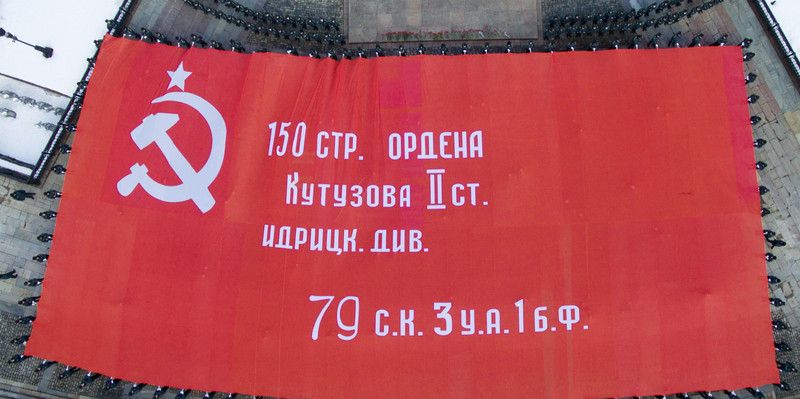
Published 5/9/2023 8:20 PM | Edited 5/10/2023 5:12 PM
The answer to this question forces us to recall the events that led to World War II and the defeat of Nazi Germany and its allies.
As everyone knows, the German rebuilding and rearmament during the 1930s was only possible due to the connivance and help of the “West”, which saw in Germany and Nazism a “dike” against the Soviet Union and the rise of revolutionary struggles in Worldwide.
The leaders of the imperialist nations were betting on the advance of Nazi Germany towards the East, towards the Soviet borders. But “the shot backfired” and, instead of attacking the USSR first – whom he feared –, Hitler preferred to start by invading the so-called “western democracies”, and only then, strengthened, attacking the Soviet Union.
A situation was created, then, that forced the capitalist countries not yet occupied by Hitler – such as Great Britain and the United States – to seek an alliance of convenience with the USSR, to defend themselves against Nazi Germany.
These countries even assumed the commitment to open – as early as 1942 – a second front of struggle in Europe, to relieve German pressure against the Soviet Union. In practice, however, they bet on mutual wear and tear between Germany and the USSR and indefinitely postponed the opening of this second front.
It was only on June 6, 1944 – after three years of prevaricating and when the Red Army was already sweeping away the Nazi armies and approaching the German borders – that the USA and England decided to land in the south of France and open the second front. , not to let the USSR win the 2nd World War alone.
In the following months, faced with inevitable defeat and fearful of having to capitulate to the Red Army, Nazi leaders proposed a separate peace with the US, Great Britain and France, even suggesting later “to attack the communist enemies together”.
As this did not prosper, they decided to capitulate to the western allies only, which was done at dawn on May 8, in Reims, France. There, Colonel-General Jodl signed the “German surrender”, before Lieutenant-General Walter Smith, of the Anglo-American High Command, and General François Sevez, of France.
The Soviet High Command protested against this unilateral capitulation and demanded the formal surrender of Germany in its capital, Berlin, taken by the Red Army.
Thus, in the early hours of May 8 to 9, 1945, in Berlin, German Field Marshal Wilhelm Keitel – seconded by Colonel General of the Air Force Hans Stumpf and Admiral Friedeburg – signed the act of unconditional surrender of Nazi Germany in the face of the USSR – represented in this act by the Deputy Supreme Commander of the Soviet Armed Forces, Field Marshal Georgy Zhukov – and before its western allies, represented by the Commander of the US Strategic Air Force, General Carl Spaatz, by the Marshal of the Air Force of Great Britain , Arthur Tedder, and the Commander-in-Chief of the French Army, General Jean de Lattre de Tassigny,
The first paragraph of the act of surrender read: “We, the undersigned, acting on behalf of the High Command of Germany, together with the Command of the Red Army and the Supreme Command of the Allied Expeditionary Forces, agree to the unconditional surrender of all our Armed Forces of sea, land and air, as well as like all forces currently under German command.”
In this way, the war in Europe ended with the annihilation of Nazi-fascism by the Soviet Union (with a small contribution from the western allies), burying the plans of Hitler and the great German capitalists to impose on the world the domination of the “Aryan race” and the enslavement of so-called “inferior” peoples.
Since then – and especially after the beginning of the so-called “Cold War” – the United States and its satellites began to use May 8 as the reference date for German capitulation, and the USSR and revolutionaries around the world to reference the German surrender on May 9.
Therefore, this is not a mere “date confusion”, but a dispute regarding the key role the USSR played in the defeat of Nazi Germany in WWII – annihilating 90 German divisions, against only 6 divisions defeated by the Western Allies.
Source: vermelho.org.br

